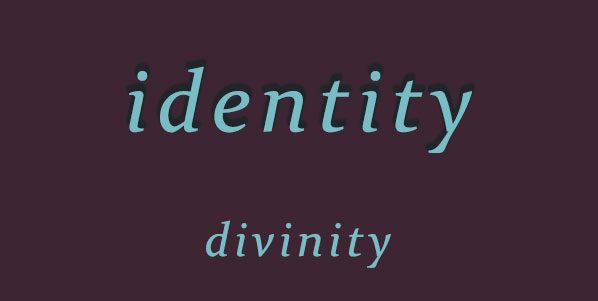In the first post “human identity – representation” we looked at the Hebrew words used for image and likeness. In “human identity – crowned” we looked into the royal meaning behind some of the words the Hebrew bible uses to describe Adam and Eve’s role and status. Given that the same ‘image’ language is used in Gen 5 it is clear that what was true of Adam & Eve is true for all of us – they were ‘God’s Royal Representatives.’ We briefly concluded by saying that to the cultures of the aNE, royalty were seen as children of a god. We cited two examples of this, and left the implicit link to Adam & Eve unspoken. It’s time to dig into this at last.

Image (tselem)
We have seen that tselem has clear idol links. Here are a few verses which illustrate this – remember we are trying to get into the minds of the writers of Genesis.
- Speaking of the occupants of Canaan in Num 33:52 Yahweh commands the Israelites to ‘…destroy all their figured stones and destroy all their metal images (tselem) and demolish all their high places.
- In a thought provoking passage in Ez 16 we read about how Israel took the precious jewels of gold and silver that God had given to them ‘and made for yourself images (tselem) of men, and with them played the whore.’ (17)
- In Amos 5: 26 God reminds the people of their idolatry – ‘You shall take up Sikkuth your king, and Kiyyun your star-god—your images (tselem) that you made for yourselves.’
- Lastly 2 Chr 23:17 records how the people destroyed the images of Baal whose ‘images (tselem) they broke in pieces’.
There is a clear, inescapable link between the word tselem, (image) and its usage to describe an idol. The two are ‘joined at the hip’ so to speak. Our lecturer explained it like this
to liken humanity to a statue of a god is either dangerously careless or deliberate and profound.[1]
Let’s face it, given the depth and impact of Genesis 1-3 it is unlikely the authors choose to use that word by accident. Profound writing does not often happen by chance! Surely it makes much more sense to suggest that this is a deliberate choice of words. The writer was well aware that their audience would conclude that Adam was created as Yahweh God’s idol.
What was an idol?
Over the years of being a follower of Jesus Christ I have heard countless times that we sophisticated moderns don’t have idols in the same way as our ancestors did. There may be truth in this idea[2]. We then grope around trying to find equivalent things that usurp God in our lives. Common suggestions are work, family, and punk music (for me at least). In some ways these ideas do seem a world away from what the bible understands by the concept. And because of this, we miss a deep truth about who we are.
The cult statue of a god was fully identified with the god in question. The word ‘cult’ here means ‘to do with worship’. This identification of the idol/statue/tselem with the god meant that the idol/statue/tselem was considered to be fully alive. This means that it was able to do whatever a human being does – sleeping, waking, eating – even though the statue itself was always unspeaking and unmoving.[3]
For us the word image means ‘something you can look at’ perhaps on a screen or a painting which re-presents the original. However, to the bible writers, rather than being a copy of something, in reality the image itself was seen as a real thing. The idol/statue/tselem was not merely a re-presentation of the original that was present elsewhere. Rather it was thought to contain that reality in itself. The idol/statue/tselem was seen as being equivalent to the original in its being, rather than just a copy. So when they looked at an idol it was to their minds the real, total embodiment of the god itself, present in their time and space. [4]
Somewhat different to how we understand the word then! When this idea was first explained to me I wondered if I had ‘joined a cult’. The implications are enormous. I remember sitting around discussing it with other worried students. Here was scripture being counter to the 21st century evangelical culture, whilst seemingly immersed within its own; which of course it should be. This seemed very dangerous teaching indeed. Oddly, that is how Jesus himself was seen…
In the next post I will discuss how these idols were bought to life and what this all means for us.
References
- Crispin Fletcher Louis – lecturer notes, ‘Creation and Worship’, WTC
- This is of course a ‘western-world’ outlook. I know of several people who have firsthand experience of household idols.
- E. Matsushima, ‘Divine Statues’ 1993
- Bahrani, The Graven Image



